Hanfu vs Qipao, both are excellent representatives of traditional Chinese costumes. Hanfu (汉服), Han national traditional costume. Qipao (旗袍, cheongsam), the women's clothing of the Republican era.
Whenever traditional Chinese clothing is mentioned, the cheongsam is usually the first thing that comes to mind. But with the expanding influence of Hanfu, a costume that better represents Chinese history is being preferred by more and more people. What exactly are the differences between the two costumes?
1. Hanfu vs Qipao in Different Origins
Origin of Hanfu
Ancient hanfu was the traditional clothing and accessory system of the Han Chinese from the time of the Yellow Emperor to the middle of the 17th century AD (late Ming and early Qing dynasties).
Origin of cheongsam
Cheongsam was formed in the 1920s and later became the most common women's clothing at that time, being one of the most splendid phenomena and forms in China's long-standing dress culture.
The controversy of the origin of cheongsam
There are still many controversies about the definition of cheongsam and the time of its production, focusing on the following.
1. It is believed that cheongsam is developed directly from the robe of Qing Dynasty.
2. It is believed that cheongsam and Qi suit have some inheritance relationship, and also think that the source of cheongsam should be the Western Zhou linen narrow tube dress or the Shenyi of Qin and Han.
3. It is believed that Chinese women wear the robe, far back in the Zhou, Qin, Han, Tang, Song and Ming dynasties, and not only in the Qing dynasty women wear robe clothing.
4. It is believed that cheongsam is a westernized variation of Chinese tradition clothing.
5. It is believed that cheongsam originated from Ming Aoqun.
6. It is believed that women wore cheongsam as a result of deliberate imitation of men's dress and obsession with gender equality.
2. Hanfu vs Qipao in Different Costume Styles
Styles of Hanfu
In terms of style, hanfu is much richer, and between different dynasties (Han Dynasty, Tang Dynasty, Song Dynasty, and Ming Dynasty), all developed very representative hanfu styles.
Hanfu can be broadly summarized into the following three clothing forms.
- Shenyi Zhi (深衣制): the upper garment and lower garment are sewn together.
- Yichang Zhi (衣裳制): the upper garment and lower garment are separated.
- Tongcai Zhi (通裁制): no seam between the upper garments and lower skirt, and they are cut straight.
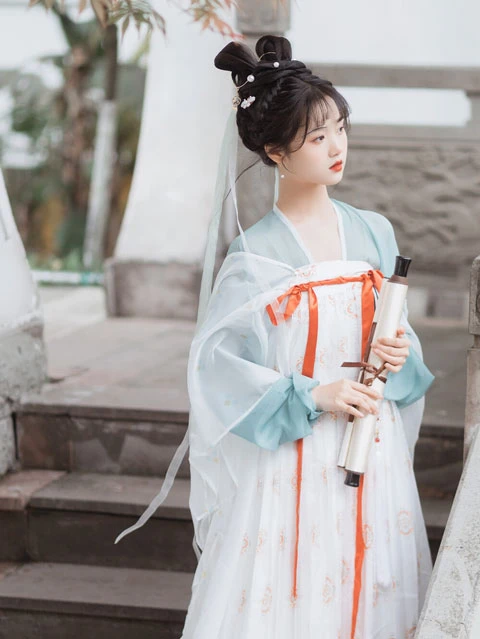
Hanfu Qixiong Shanqun
Styles of Cheongsam
The cheongsam has evolved over the centuries, interpreting colorful styles as people's lifestyles and aesthetic sensibilities change.
Most of the classical cheongsam uses flat and straight lines, the body is loose, the sides are open, and the chest and waist circumference are closer to the size ratio of the bodice and skirt.
In the 1930s and 1940s, the golden age of cheongsam development, style changes and very rich. Cheongsam also entered the era of three-dimensional modeling, the piece of clothing appeared on the dart, the waist is more fitted and with Western-style inset sleeves, cheongsam length, sleeve length greatly shortened, the waist is also the more fitted.
Cheongsam lapel, collar, sleeve, skirt, and other parts of the style is different:
- Lapel has round lapel, square lapel, long lapel, etc.
- Collar has Yuan Bao collar, low collar, etc.
- Sleeves have long sleeves, short sleeves, and flared inverted large sleeves.
- In the cuffs of the decoration, with inlay, embroidery, piped edge, and other different processes, very chic.
- Skirt hem in addition to the length of the change, but also increased the fishtail shape, wave shape, and other styles.
In modern times, whether in the international fashion stage, or daily work and life, modern cheongsam with a variety of postures to show the beauty of women, interpretation of a different Oriental style.
3. Hanfu vs Qipao in Different Characteristics
Characteristics of Hanfu
- Jiaoling Youren (交领右衽): the collar is directly connected with the lapel, and the lapel is crossed in front of the chest, and the lapel on the left side presses the lapel on the right side, which shows a "y" shape in appearance.
- Baoyi Guangxiu (褒衣广袖): loose clothes with long-wide sleeves. Hanfu formal dresses are generally wide-sleeved, showing a graceful and generous.
- Jidai Yinkou (系带隐扣): restrain the waist by belt and lacing.
Characteristics of Cheongsam
The appearance of cheongsam generally requires all or part of the following characteristics.
- Right overlapping large lapels in the form of a lapel or half-lapel.
- Standing collar.
- Paneled buttons.
- Side hem slit (not necessary).
- The single piece of fabric.
- The sleeves are attached to the body of the garment.
4. Similarities between Hanfu and Cheongsam
Both hanfu and cheongsam faded out of the limelight due to historical reasons. But as the revival of Chinese traditional costumes continues, they both regained their former glory.
Hanfu
Due to the policy of "Tifa Yifu" implemented by the rulers of the Qing Dynasty, for more than two hundred years of history, Han Chinese men's clothing was basically modeled on Manchu clothing, and Changshan, Magua were all improvements and developments of Manchu-based dress, rather than traditional Han Chinese dress.
At the beginning of the 21st century, with the development of China's national power, people began to examine the outstanding parts of their traditional culture.
Some people restored the traditional hanfu costume by examining it and taking its essence to remove the dross, and at the same time re-promoted the restoration of traditional hanfu and wearing it for promotion by restoring traditional festivals, promoting traditional doctrines and propagating traditional musical instruments, and called it the hanfu movement.
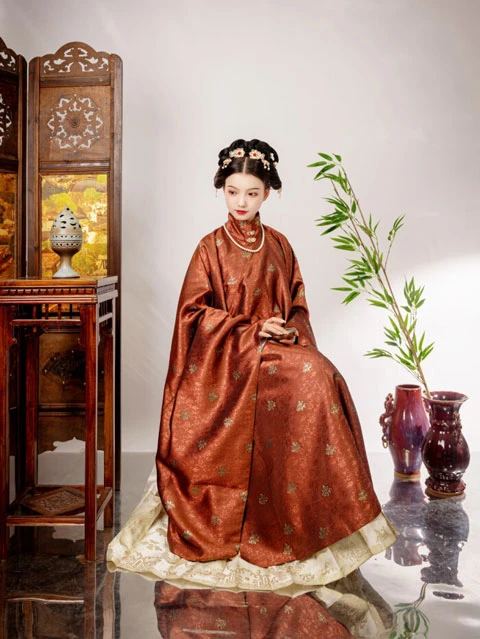
Ming Dynasty Hanfu
Cheongsam
After the 1950s, cheongsam was gradually been forgotten. Until the 1980s, with the renewed emphasis on traditional culture and the influence brought by film and television culture, fashion shows, and beauty pageants, cheongsam was gradually revived not only in mainland China but also in various fashionable places around the world.
- In 1984, the cheongsam was designated by the Chinese State Council as the dress for female diplomats.
- From the 1990 Beijing Asian Games onwards, the cheongsam was chosen as the ceremonial dress for the Olympic Games, Asian Games, and international conferences and expositions held in China.
- On May 23, 2011, cheongsam making handicrafts became one of the third batches of China's national intangible cultural heritage.
- In November 2014, at the 22nd Asia-Pacific Economic Cooperation (APEC) meeting held in Beijing, the Chinese government chose cheongsam as the clothing for the wives of the participating leaders.
Hanfu and cheongsam are representative of traditional Chinese dress costumes, which follow the times and carry civilization.
Fortunately, the revival of Hanfu and Qipao continues. They are the crystallization of Chinese national costume culture casting, and moreover, they mean the awakening and recognition of Chinese cultural elements.
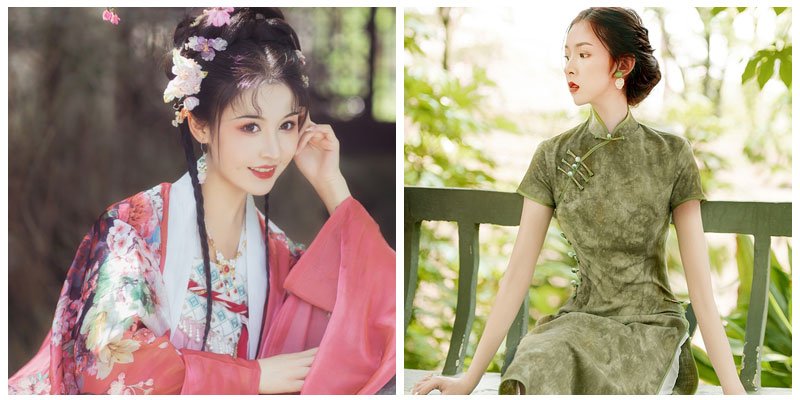
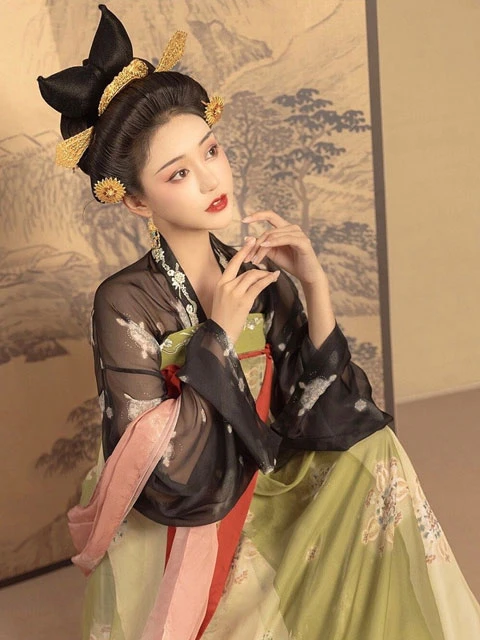
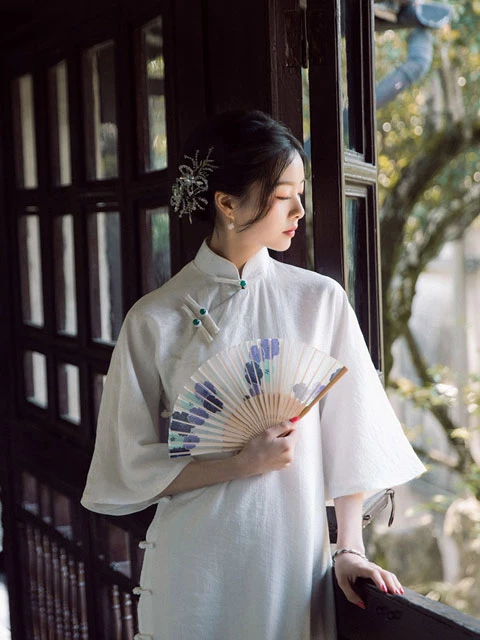
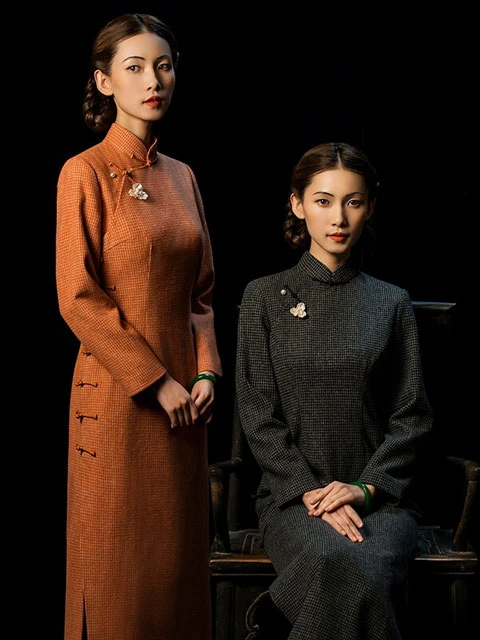
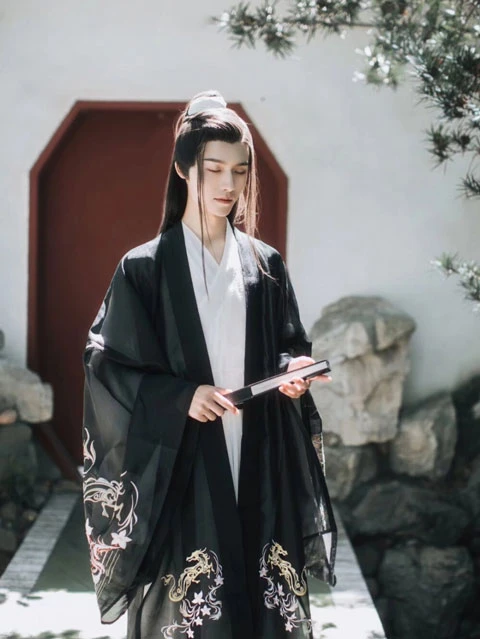
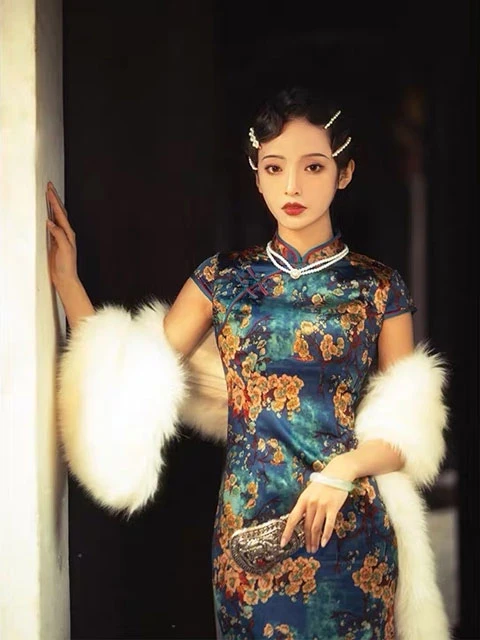
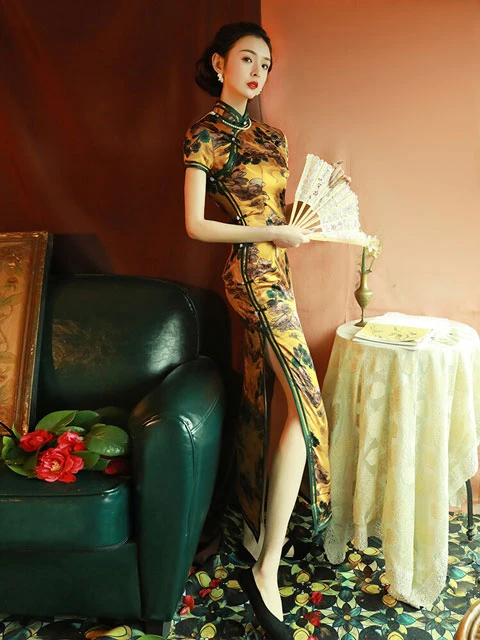

Hanfu terlihat anggun, sedangkan cheongsam lebih modern
🥰